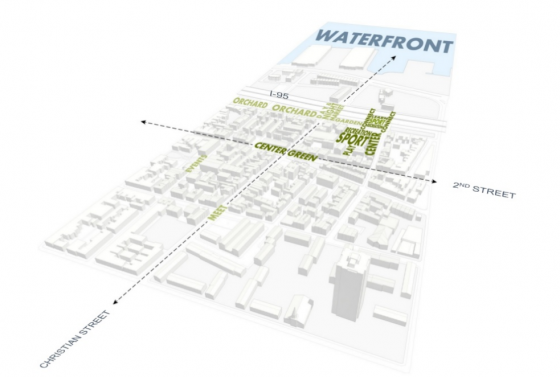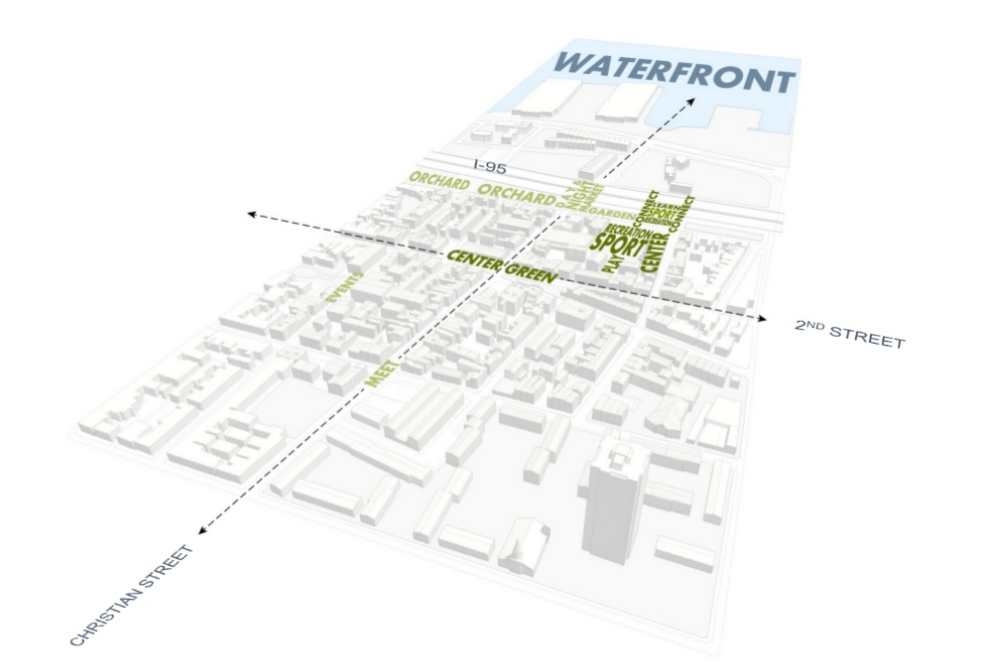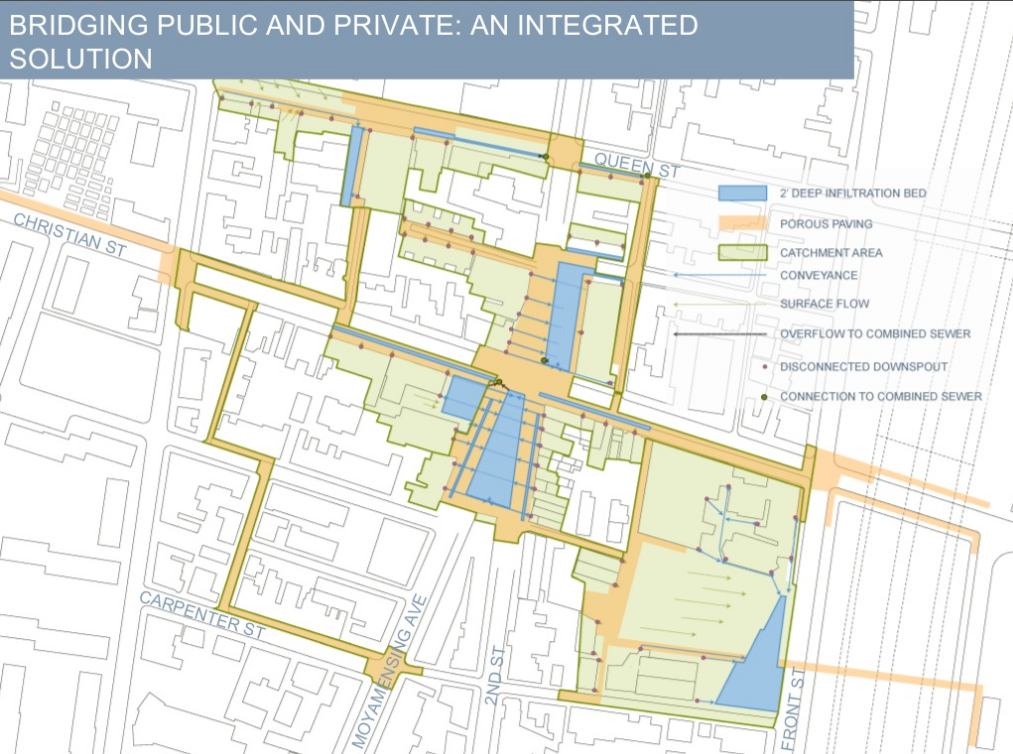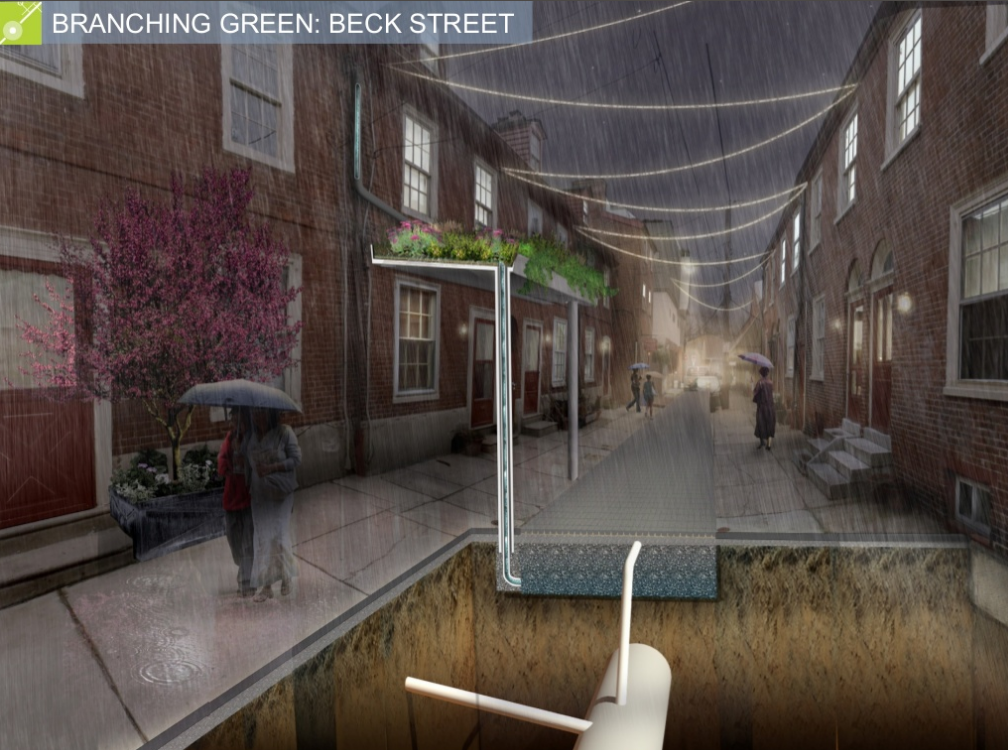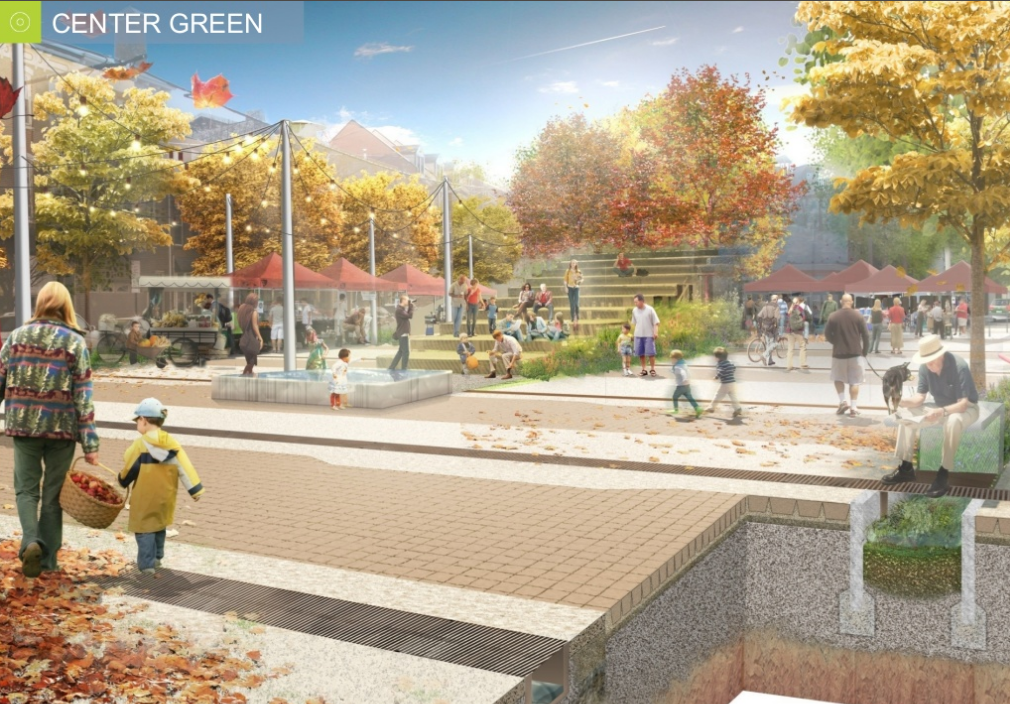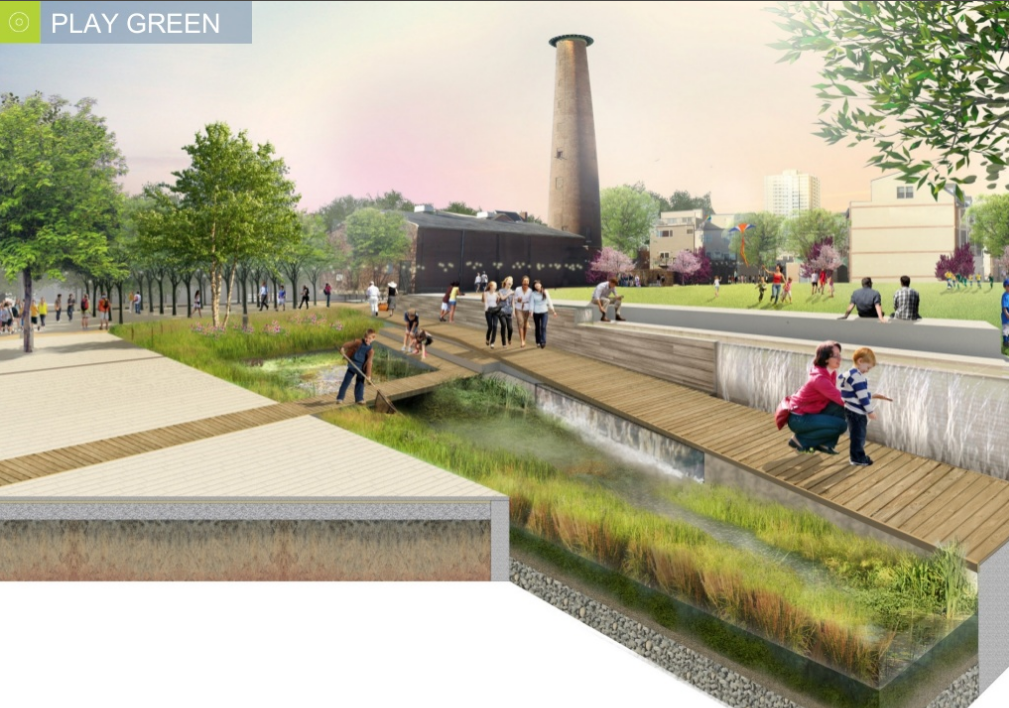Greening the Grid, the winning team in the residential element of the Soak It Up! challenge, envisioned retrofits in Queen Village that would plant more trees along residential streets, connect those streets with corner parks, and connect those parks with larger community greenspaces in the neighborhood and across the city. Their submission can serve as model for just about every neighborhood in town.
“It won’t be successful at the end of the day if you take a vacant lot in Queen Village and turn it into a rain garden,” said Kristen Knese, senior marketing coordinator at The Olin Studio, and one of the members of the winning residential team, about how to retrofit a residential area with stormwater management infrastructure. While it seems simple enough to improve stormwater management in a residential setting, say by fabricating more planters and gardens, the Greening the Grid team envisioned how to connect those smaller projects for an overall large community impact.
The team modeled its design after goals set forth in Green City Clean Waters (GCGW), a 25-year plan from the Philadelphia Water Department (PWD) to improve Philadelphia’s drinking water and stormwater management infrastructure, in addition to greening 9,500 acres in Philly by 2035. Team members wanted the design to be capable of achieving triple bottom line economic, social and environmental benefits through a green approach.
The plan envisions streets as a “linking greens,” with increased street tree planting and improved stormwater management infrastructure beneath the surface. Linking greens are connected with “branching greens”, which can be refabricated corner parks or simple areas with a few planters. Branching greens will connect with larger “meeting greens.” These are large parks, like the Shot Tower Playground at 131 Carpenter St., which could include a stormwater wetland. At 2nd & Moyamensing, the plan envisions The Wetlands, with elements like a rain stage filtration garden, permeable paving surface, and runners than channel commercial roof runoff into permeable stone beds. It’s essential to note that a major part of the stormwater infrastructure improvement takes place via new technology installed beneath the ground.
In terms of funding, the plan becomes less clear. The idea was to leverage private dollars for green infrastructure in locations where private development parcels would have a reasonable payback through storm fee billing reductions, according to Knese. This most likely would be big box or large industrial parcels. Ideally this would finance up to 2/3 of greened acre goals. The other third will be mostly financed through PWD funding, as stated in GCGW. Sites would be selected according to community benefit criteria defined by neighborhood participation and 2035 planning goals.
While the Soak It Up! winning proposals are only conceptual, they often serve as the first seed that germinates the process of development. This concept can also serve as a model for neighborhoods around the city for how to improve their connections through green space and infrastructure. Should any of these proposals become a reality, they would be a huge boon to their respective neighborhoods. But whether this or any of the others will actually happen, we’ll just have to wait and see.
–Lou Mancinelli

